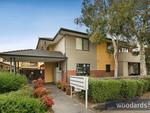How to spot the next property “hot spot”… or not

I’ve had a couple of conversations with prospective new clients recently wanting to know where I see the next “hot spot” as being, and my responses have been met with varying degrees of acceptance of my views, the question is an understandable one, let’s face it, we all like to think we’re getting a bargain
Now, to explain the term, a “hot spot” is an area where it has been predicted that disproportionate growth in housing prices will occur, normally because of some new project or government announcement which affects population growth and therefore demand in that area.
Investing in property is based on the same principles as the sharemarket, it’s not about being able to pick the bottom of any market or area then buy and sell out at the peak, as a stockbroker friend of mine said to me during the tech share boom years ago, “Kirk, it’s not about timing the market, it’s about time IN the market”.
The problem with chasing these “hot spots” is that, in general, by the time you hear about them, you’re most likely already behind the 8-ball and the upward movement in property prices is either well underway or quite possibly almost at its peak, which will make the investment a poorer performer than the broader market. My recommendation to clients is to buy in areas where there is already a good track record of performance from both sale and rental aspects so your level of demand is already established.
I’m not saying there aren’t hot spots, but picking them comes down to pure luck sometimes, and the people pushing them are quite possibly in the market there already so you might want to check what their interest is in promoting them… even the experts in firms like Corelogic can only pick trends, but determining the high and low points is beyond even their capabilities. In some of these hot spots, as fast as the prices go up, they come down again too – look at Perth and the mining towns that experienced such rapid price growth during the resources “boom”, then once it was over, came back off dramatically.
My preference has always been to look at areas which are well supported already by infrastructure and amenities, with a good history of performance when comparing similar property types, and which have limited supply of new properties (ie apartment towers, new housing developments etc) coming into the market – these fundamentals will help drive your value, rather than trying to “hot spot”.
So rather than trying to beat the rush to the next hotspot, find a good blue chip property in a solidly performing area, and buy and hold – that’s where you get your solid, long term growth.

